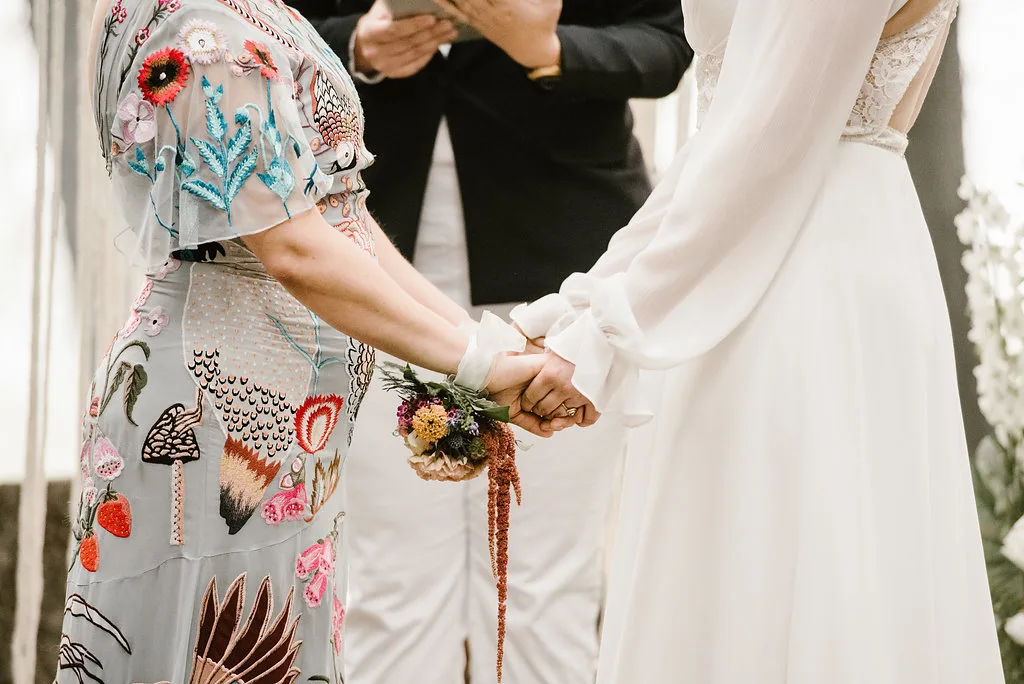At Young Hip & Married, we believe that we all, vendors and couples alike, have a role to play in making the wedding industry safer, more welcoming and more inclusive for all people. A big issue in the wedding industry is a primary focus on the “bride’s day” and assumption that all couples, and even all guests, are heterosexual. Obviously, that isn’t the case. So we want to do what we can to facilitate a safe, welcoming and inclusive wedding ceremony that celebrates all types of love.
Helping us with this mission is our amazing officiant, Beth. If you missed it, check out Beth’s chat with us all about queer weddings.
Following up on last year’s post about inclusive wedding ceremony language, we’ve asked Beth to help us put together some more easy ways to create a welcoming and inclusive wedding ceremony.
PS: We think this article is applicable for wedding-planning couples, vendors and guests!
Even if you aren’t LGBTQ+
… odds are someone in the wedding party, some of the guests and/or some of the vendors are. Even if you are heterosexual and cisgender, it’s unlikely everyone involved in the wedding will be. Taking the time to ensure your wedding is safe and inclusive makes it a welcoming environment for everyone.
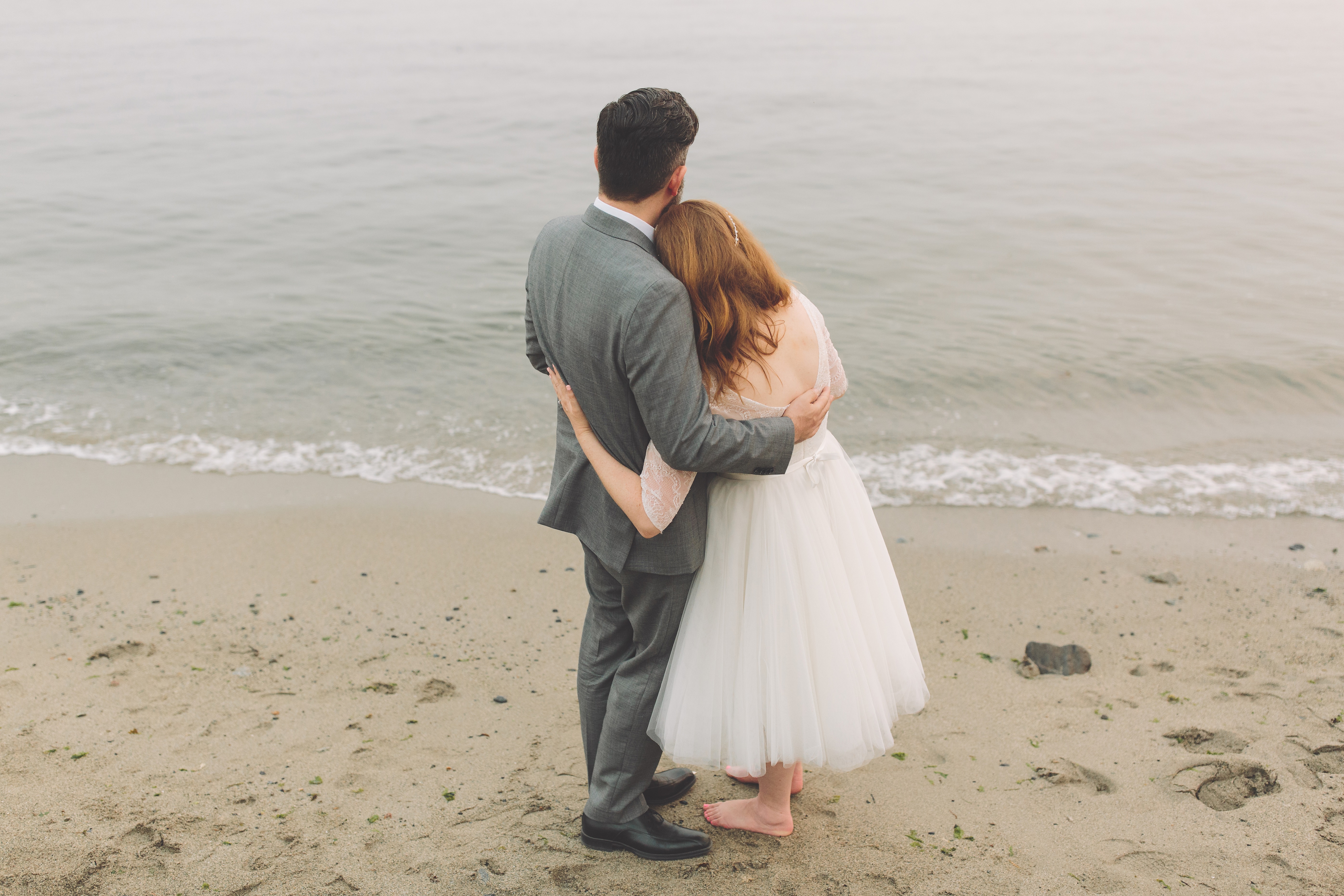
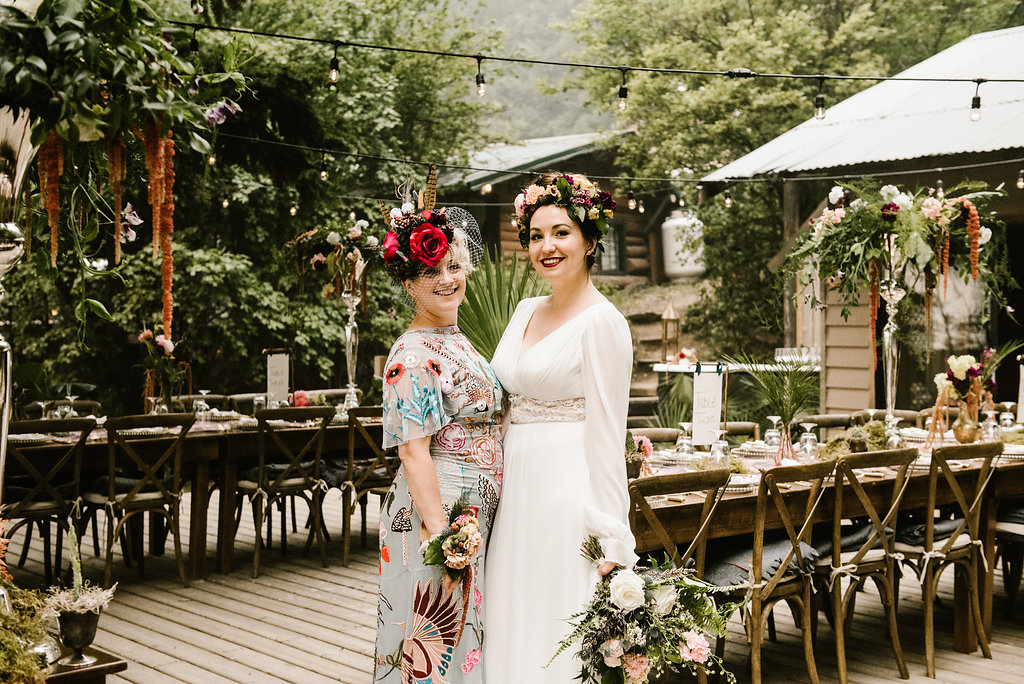
Not every label fits every person
Many people outside (and even inside) the LGBTQ+ community are confused about how to refer to people with terms and language that honour them. A good rule of thumb from Beth is to describe people using adjectives instead of nouns (e.g. “gay people” and not “the gays”). Avoid the word “homosexual” as it sounds clinical and “lifestyle” as it implies a choice. “Queer” is also a complicated term as it can have negative connotations for some LGBTQ+ people, from when it was previously used as a derogatory word, but has been reclaimed by other LGBTQ+ people as a positive term.
The best approach is to use a term that the person has already applied to themselves. If you’re not sure, politely ask. You may also want to do some independent research and familiarize yourself with terms like cis, trans, and non-binary. Here are two great places to start your research: QMUNITY and GLAAD.
Remember that this person is a whole person, and not solely defined by their sexual orientation or gender identity. For example, how often are straight people identified by their sexual orientation? We would never say, “This is my straight best friend” so why do we feel the need to say, “This is my gay best friend?”
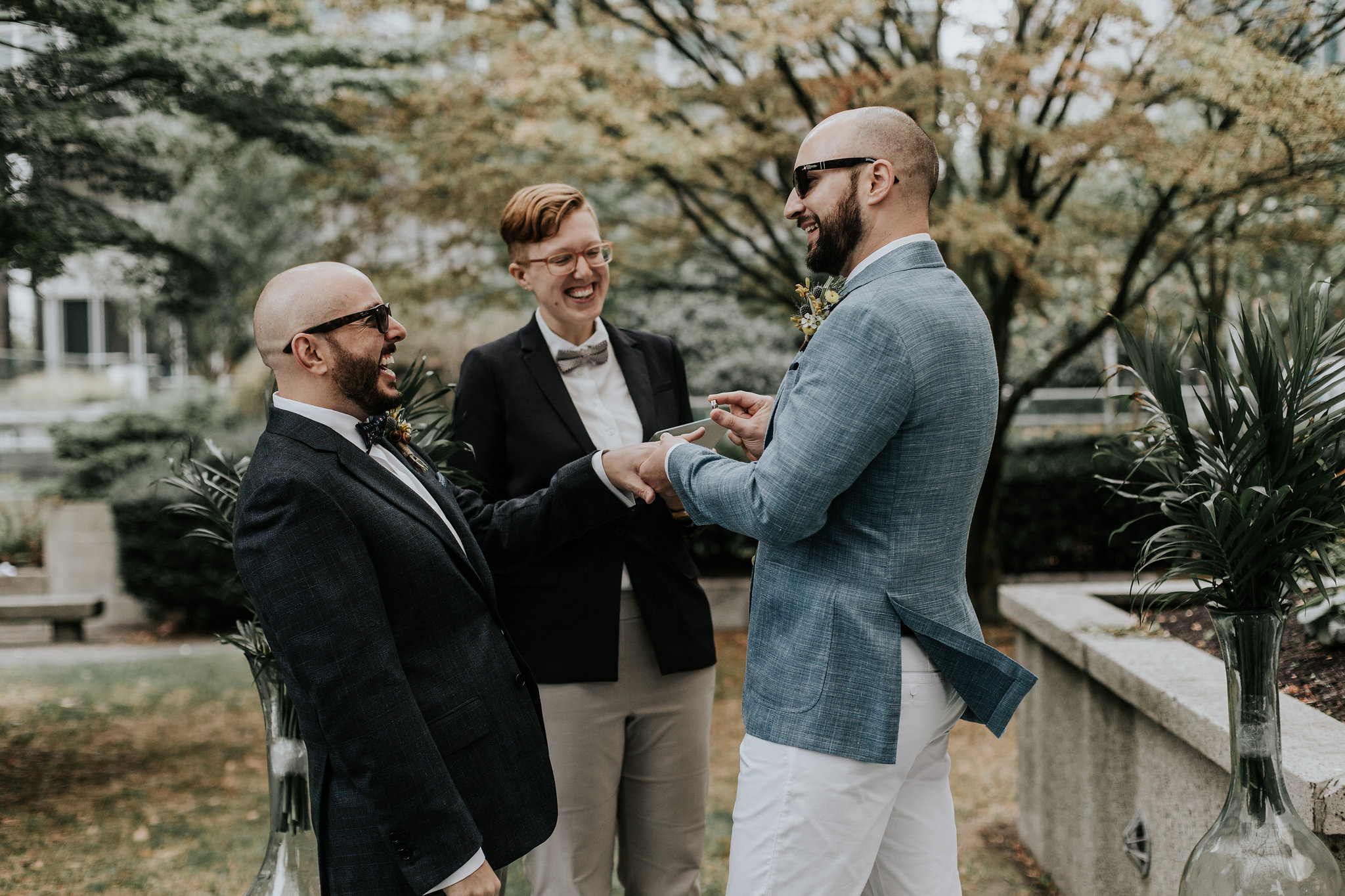
Don’t assume pronouns
When we see a stranger or a new person, we tend to make a lot of assumptions about their gender and the pronouns they use for themselves using clues from their clothing, hair and the shape of their bodies. But even if someone seems very “masculine” or “feminine” to you, your best guess may not actually reflect their gender identity. Before someone has told you their pronouns, it’s best to use gender-neutral terms, such as “The person in yellow has the seating chart” instead of “She/that woman has the seating chart.”
It might feel awkward to ask for someone’s pronouns, but it’s actually a way of honouring their personhood, and it’s way better than making a wrong assumption and hurting them. Simply say, “What pronouns do you use for yourself?” Avoid the term “preferred pronouns” as pronouns are not a preference but the reality of who someone is. Beth encourages everyone to practice offering their own pronouns in their email signatures, and in person, when they introduce themselves to someone new (“Hi, I’m Beth – I use she/her pronouns”). We shouldn’t always expect transgender or gender-nonconforming people to have to take the initiative.
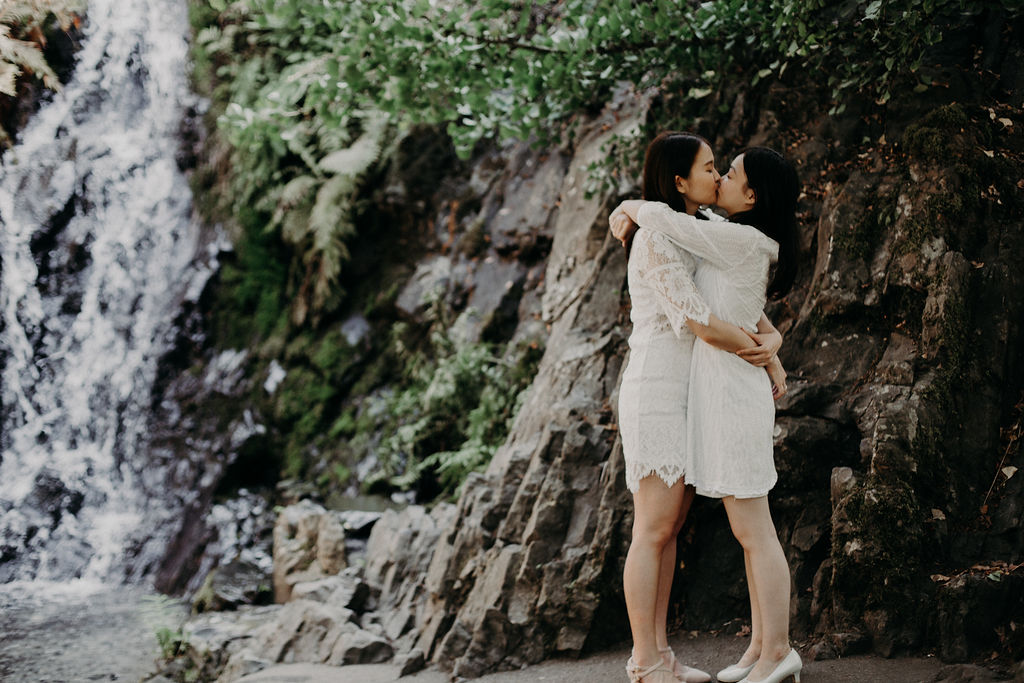
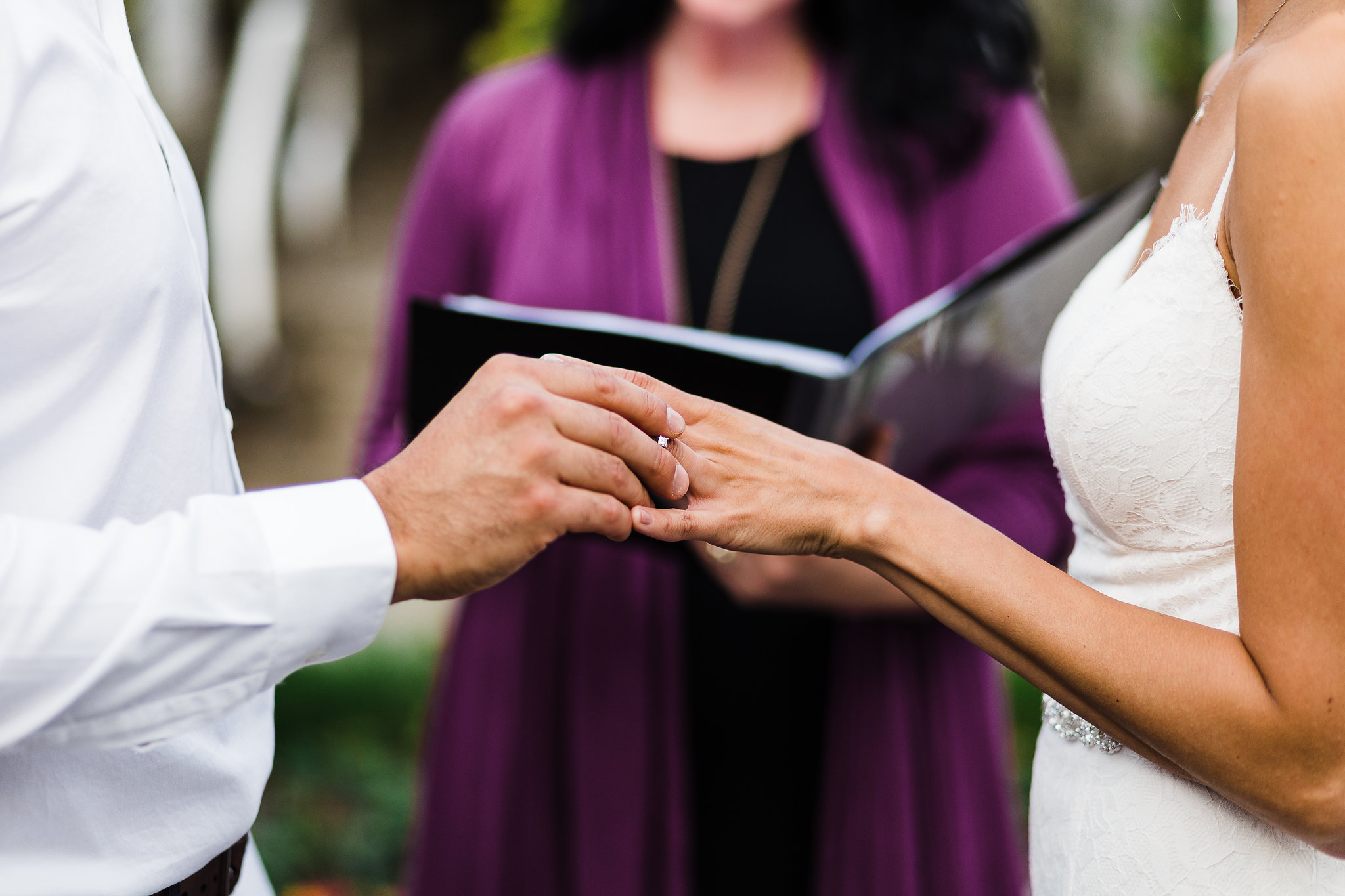
Avoid gendered assumptions
Unfortunately, the entire wedding industry is very gendered. It’s not uncommon to hear that men must propose to women and that women must wear dresses on their wedding day. And how many times have we heard that the wedding day is all about the bride and the groom just has to show up?
Let’s fight against all of that! As vendors, let’s ask questions instead of making gendered assumptions. Don’t assume there will necessarily be a bride in all weddings, or that a bride will come down the aisle in a dress, holding a bouquet and on her father’s arm. Ask all couples more general non-gendered questions such as, “How are you both arriving at the front?”
When LGBTQ+ couples get married, they usually can’t help but break some traditional gendered norms at weddings, but straight/cisgender couples need not be afraid of challenging these same norms too! Women can propose, and they don’t have to wear dresses on their wedding day. Men can walk down the aisle. Girls can carry rings, and boys (and men!) can carry flower baskets and bouquets.
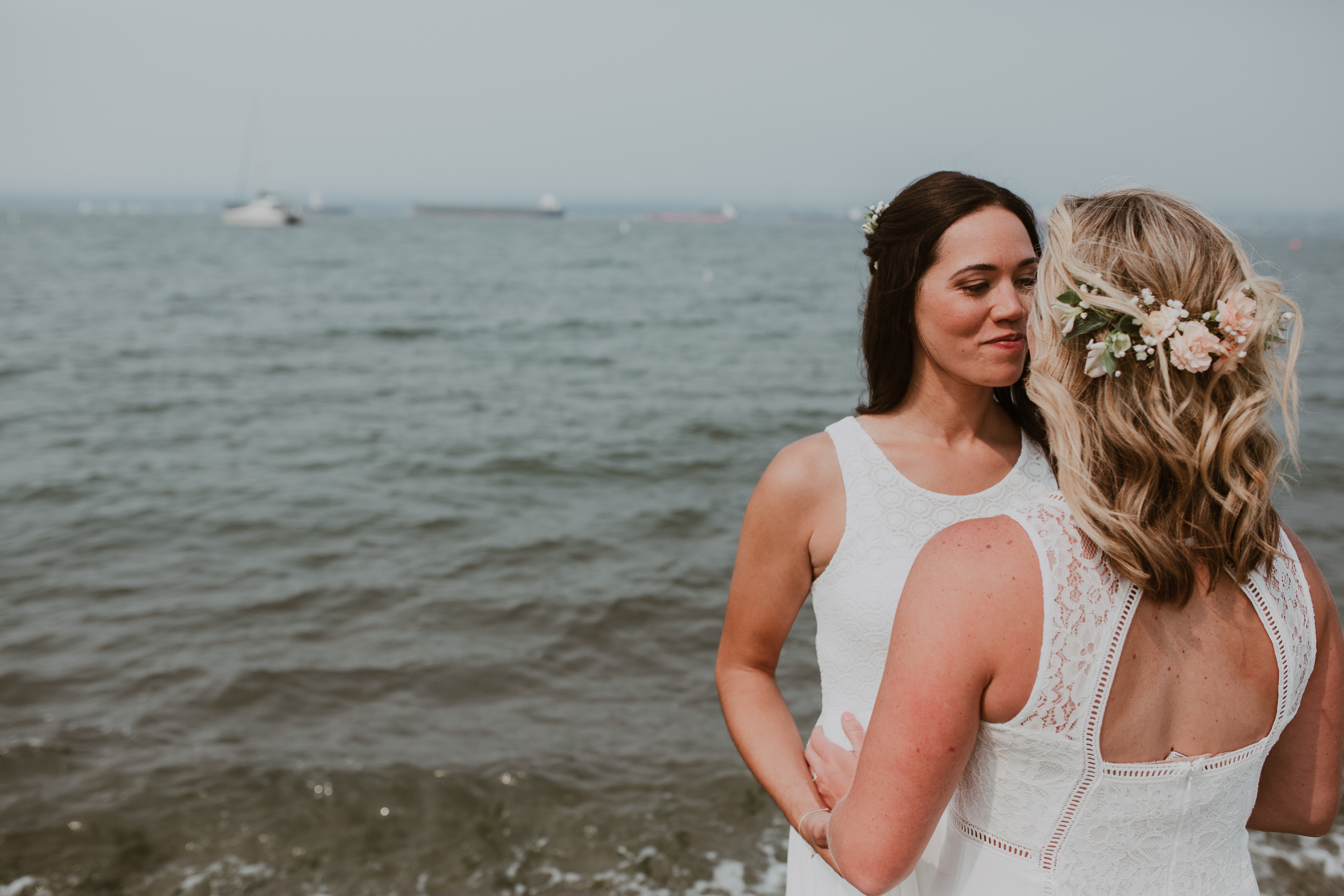
Use gender neutral language
We talked a lot about this in our post about inclusive wedding ceremony language, but Beth wanted to highlight two main areas where gendered language can be traded for something more inclusive.
We hear “bride and groom” a lot in the wedding world. Instead of using these very gendered terms, trying using “spouses” or “spouses-to-be,” “partners,” “the couple,” “newlyweds” and even just first names.
Another term we hear a lot, and not just in weddings, is “ladies and gentlemen.” At first glance, this may not sound like a very exclusionary term. But for non-binary people, who don’t identify as either ladies OR gentlemen, it can be. Instead, opt for a gender neutral term like everybody, loved ones, friends and family, or folks.
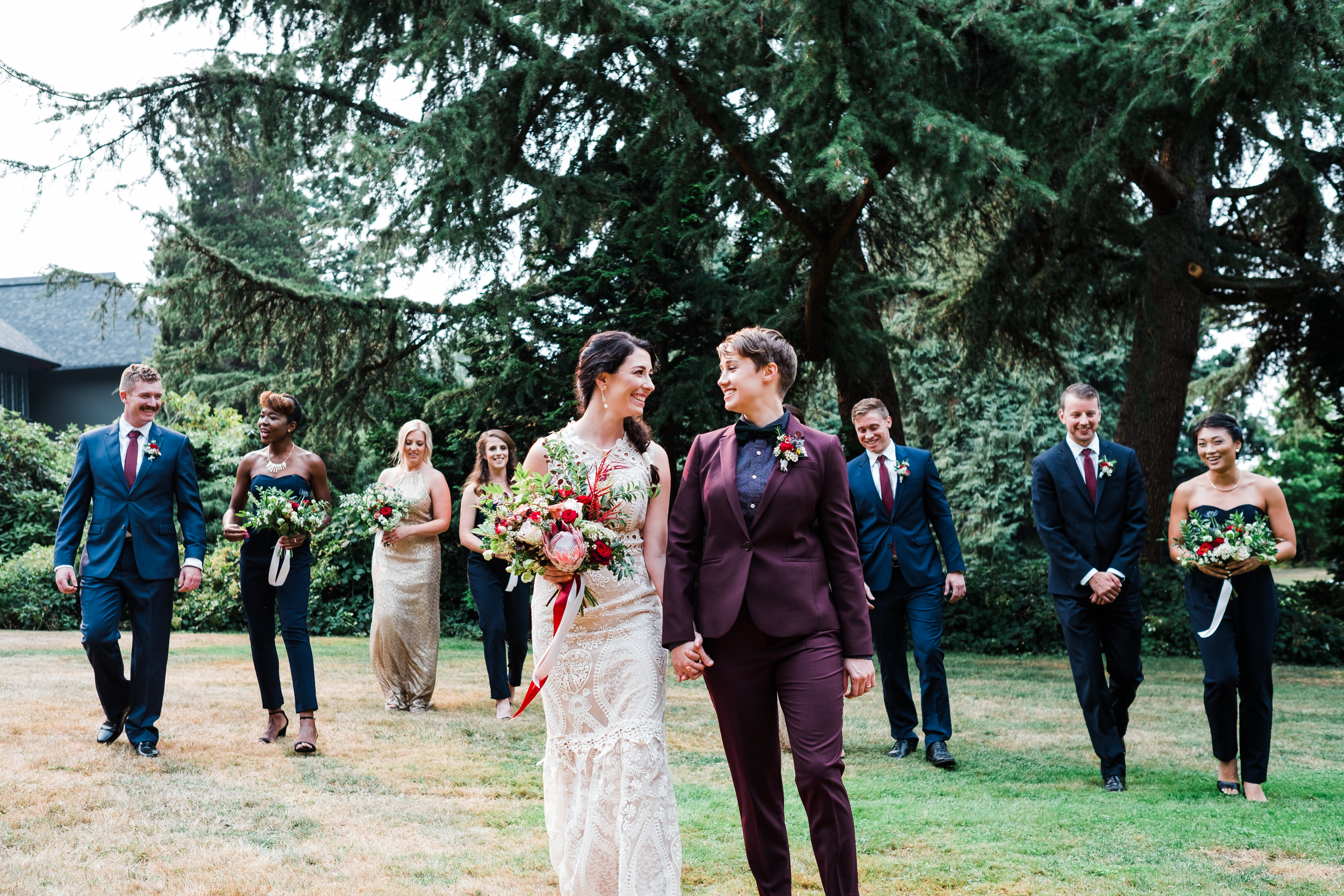
Make the wedding party inclusive as well
It’s not uncommon to hear terms like “bridal party,” “bridesmaids” and “groomsmen,” but again, these terms can be exclusive, especially now that many couples are choosing to have a mix of genders standing up on both sides.
As vendors, you can simply ask, “Who is standing up with you at your ceremony?” That way, you avoid labeling the attendants at all.
For couples, this is your chance to create a new term that is not only inclusive but also really fun. Sure, you could go with “attendants” or “wedding party” – there’s nothing wrong with that. But what about “wedding crew,” “wedding posse” or “wedding squad?” Beth also mentioned awesome alternatives like “friends of honour,” “best people” and “the fellowship of the ring.”
Remember, gender neutral language extends to children too. Vendors can ask, “Will you have any children participating carrying flowers or rings?” And couples can find creative alternatives to “flower girl” and “ring boy.”
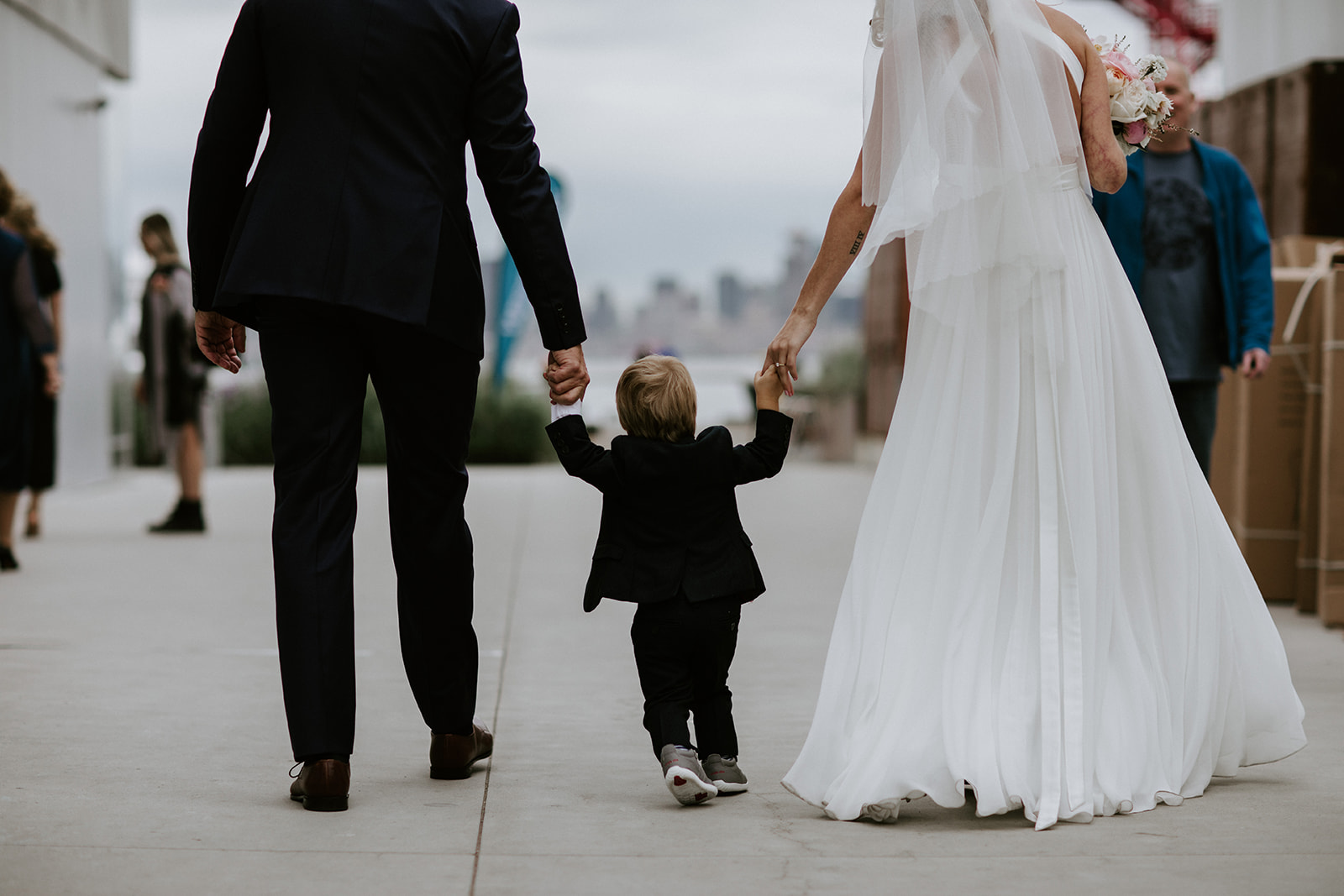
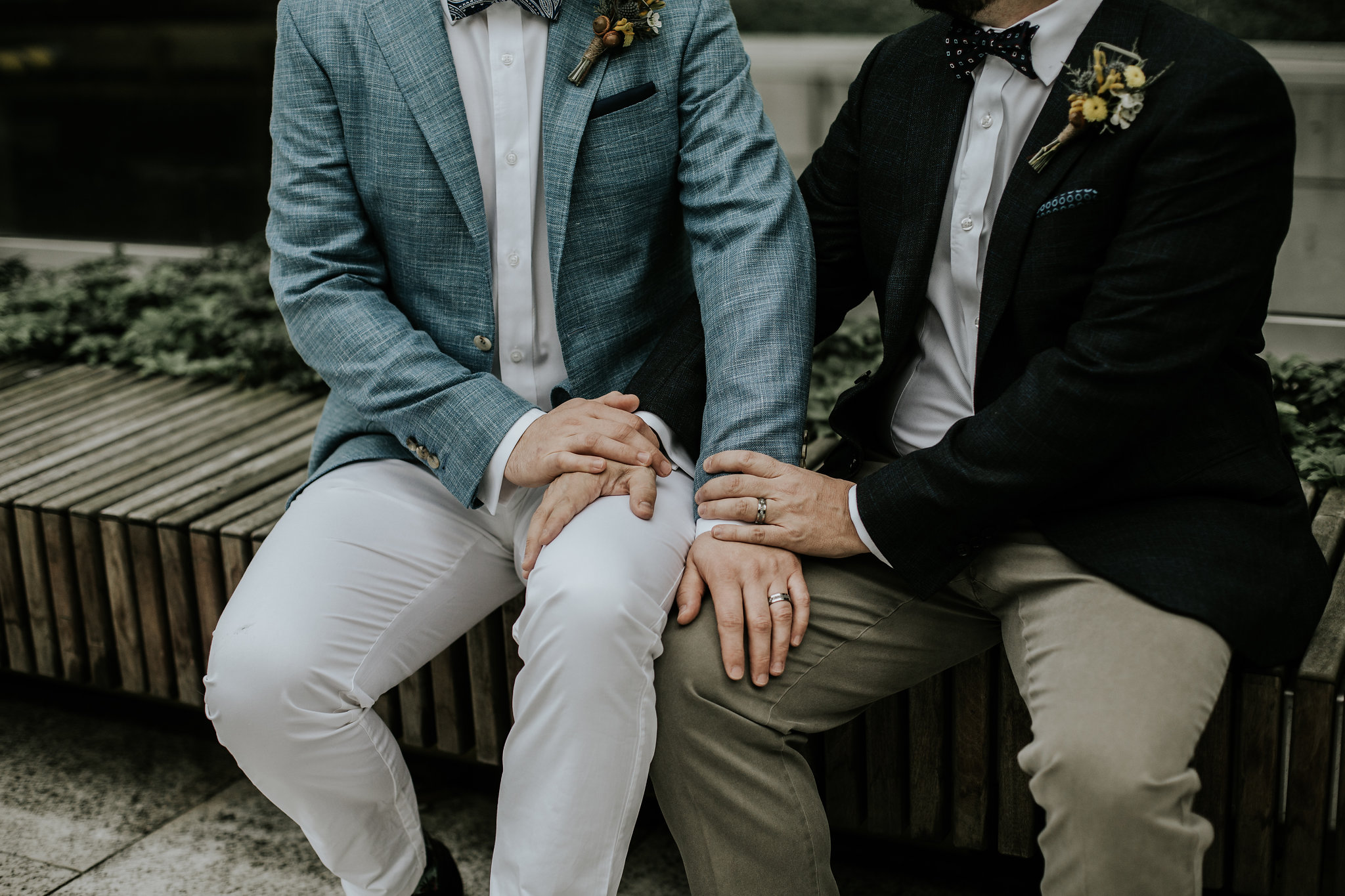
Ask polite questions
We get it. If you’re not used to changing your language and thinking about inclusion or gender, this can all be pretty confusing. But with practice, you’ll get the hang of it.
If you are confused, remember that you are allowed to ask questions. Politely, ask questions that are humble and respectful. Beth cautions to never ask questions about a person’s sex life, genitals or life before transitioning. Likewise, you don’t want to ask ignorant questions like, “Who wears the pants?” or “Which one of you is the wife?” But respectful questions that will help you to learn and improve your relationship with the person are appreciated and encouraged.
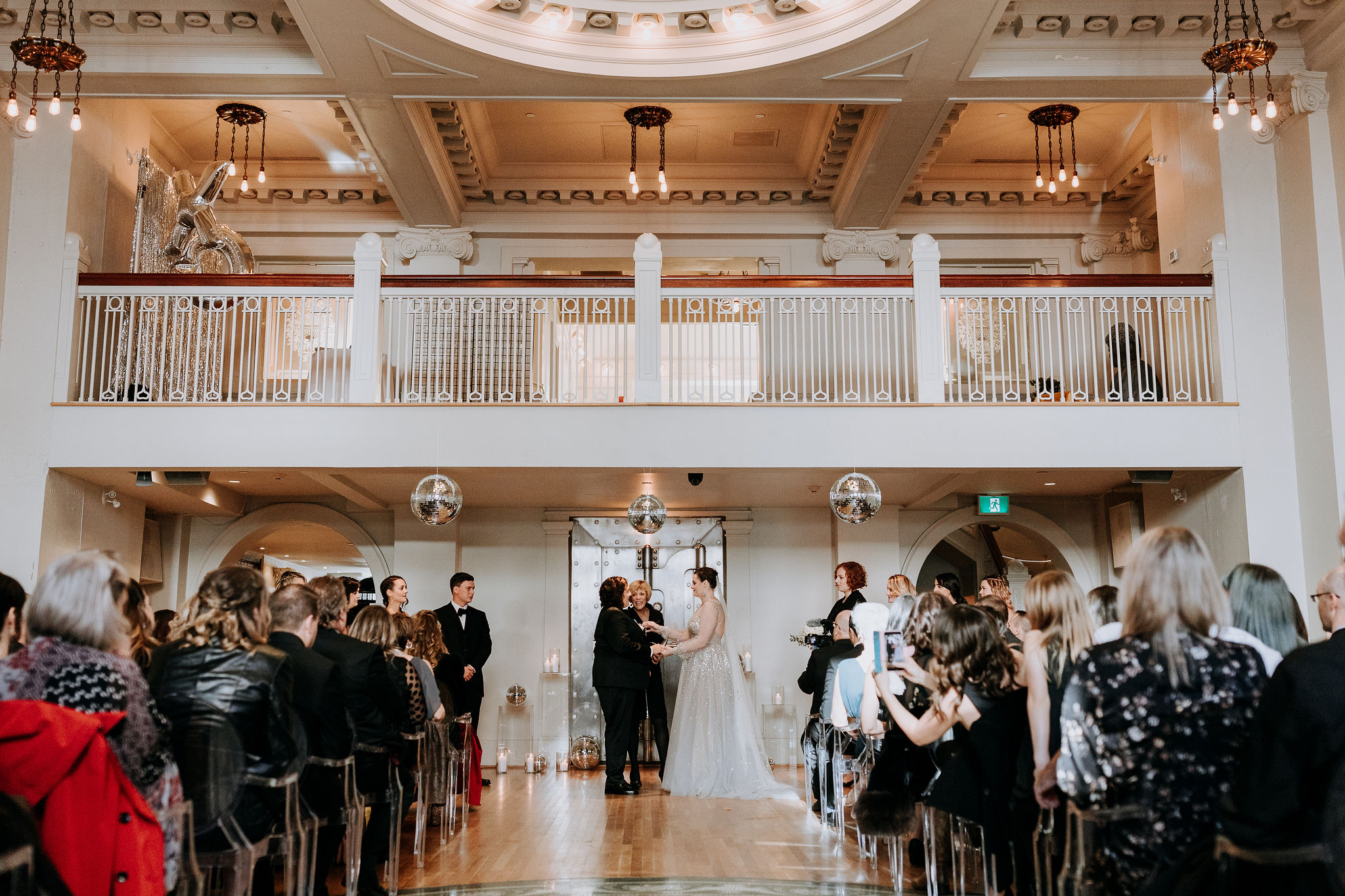
Extend inclusion to guests
Beth reminds us that we need to be extra sensitive with guests and their involvement in LGBTQ+ weddings. There may be someone on the invite list who has an issue with the relationship, guests who have refused to come, or guests who were banned from attending. There may also be guests who travelled long distances to be there and show their support. For some LGBTQ+ couples, their chosen family may be more meaningful than their birth family.
As vendors, we want to be aware of these dynamics and not assume certain traditions, like a father walking his daughter down the aisle, will happen just because they usually happen. Be open to non-traditional options and including guests as little or as much as the couple wants. For couples, don’t be afraid to let your vendors know about any challenging guest dynamics, and anything you want or don’t want to happen.
Another great way to ensure all of the guests feel safe and welcome is to check with the venue and see if they have all-gender/gender-neutral washrooms available. If not, see if one washroom could temporarily be designated in this way, so that every guest at the wedding feels comfortable.
A note on social media:
Beth wants to extend a final note about social media. Before sharing photos of LGBTQ+ couples, or tagging them, ensure you have their permission. There may be safety concerns as not all LGBTQ+ people are out to everyone in their community.
Avoid hashtags that use terms that the couple wouldn’t identify with. As Beth says, “Identities before optimization.” It’s more important that this couple is respected and accurately identified than it is that your post is optimized for likes and follows. Be careful not to tokenize an LGBTQ+ couple. They may be LGBTQ+, but above all, they’re two people in love.
A wedding is a super important day – not only for the couple but for their attendants, guests and vendors. And so it should be important to ensure this day is welcoming for all by creating a safe and inclusive wedding ceremony. That way, everyone can celebrate love with people who are affirming them in a safe space.
A huge special thanks to Officiant Beth for sharing her insights with us for this post!
wisdom & writing by Beth Carlson-Malena
written by Riana Ang-Canning
feature image by Bake Photo
